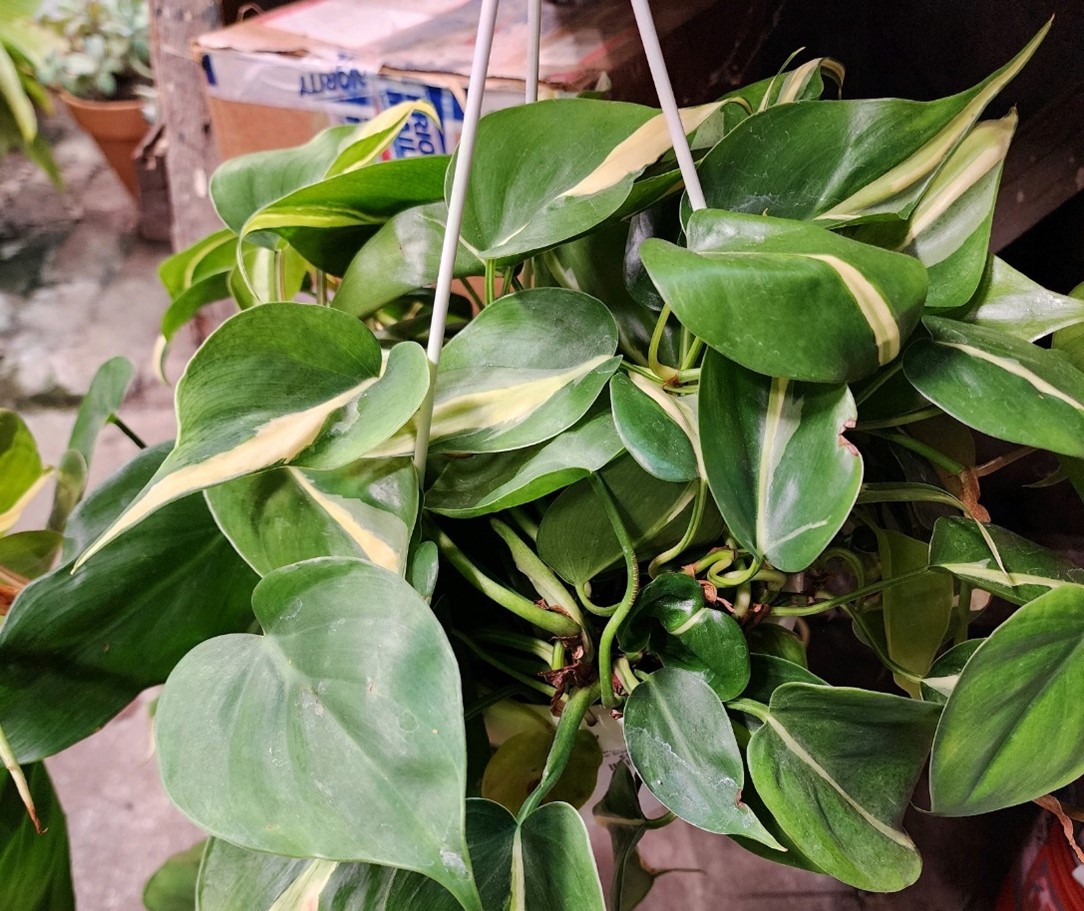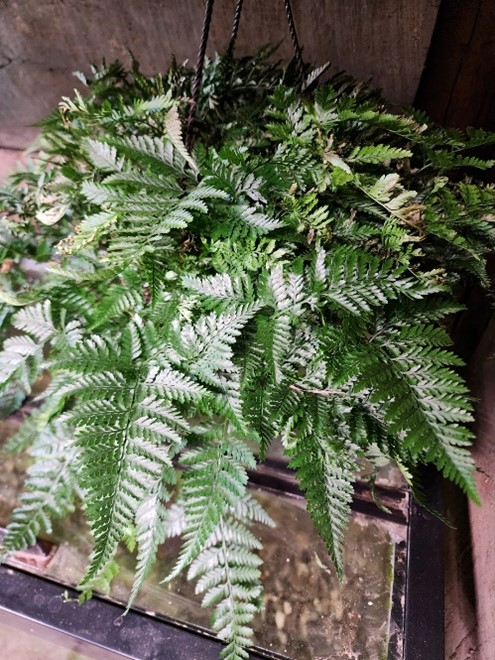There are a few different ways that people keep houseplants. Some people place the plants in their homes, and then leave them there permanently. For others, the houseplants are simply overwintering in the house, but their true home is outdoors. I tend to be the second type. This type of behavior leads to some problems, the worst being where do you put all the plants in the winter. For temporary housing, it is difficult to ensure the plants have adequate light, water, and temperature. It is fairly easy to water the plants, and with the copious amounts of LED fixtures on the market today, light is no longer that difficult either. Temperature, however, can be a bit tricky and potentially expensive.
I like to put my plants in the basement for the winter. It is easy to maintain them, and if I spill a little water it doesn’t really matter. Normally, it is best to keep tropical houseplants above 50 degrees F, but 60 F is even better. My basement is generally in that range, but with the severe cold spells we have had this winter, the temperatures have dropped into the upper 40s. The other important thing to remember is that heat rises. The floor of the basement can be as much as ten degrees colder than shoulder height on a human. There can be pockets of cold that pool in areas imperceptible to us. There are a number of solutions to all these problems, but that is beyond the scope of this blog. I brought my houseplant collection in and due to the cold spells completed an unintentional experiment! I will discuss the results here in hopes that others can learn from my misfortune.
First of all, it is important to realize that each species will have its own temperature preferences. It is not uncommon for one species to be able to tolerate the cold, and yet another closely related species will not. In the field of Ecology, there is a well know optimal zone that our houseplants prefer. These are temperatures from about 60 to 90 degrees F. Now, not all houseplants fit this zone, but I am generalizing for the purposes of this discussion. Outside of this range, are the zones of stress. The plants may still live in this range for a short period of time, but this is not ideal or preferable. For example, let’s say on the cold side we go down to 50 degrees, and on the warm side 100 degrees F. Beyond the zones of stress are the zones of intolerance. This is where the temperatures are too extreme and the plants cannot live. In my fictious but somewhat realistic example, let’s say below 50 and above 100 degrees F. Plants usually don’t immediately die, but could suffer leaf drops or dying leaves.

There are many reasons plants cannot live outside of a certain temperature range. For one thing, if it gets too cold and the tropical plants are subject to freezing that really needs no explanation. On the other end, too hot and they may desiccate, or dry out faster than they can replenish the water. Afterall, they are in a relatively small pot with limited moisture. Beyond that, one of the greatest obstacles for our plants (and everything else) boils down to chemistry. Living organisms are full of all sorts of chemicals that undergo reactions. If our enzymes that make these reactions happen faster and with less energy are subject to temperatures beyond their ideal range, they may denature, or change shape, in a way that makes them unusable. Think of breaking your house key, and then trying to use the remaining piece to unlock your door – it won’t work! So, for our houseplants, even though they are not subject to extreme hot or cold, temperatures outside their ideal range may not allow them to live because the chemical reactions necessary to maintain themselves simply do not work. For some, this process happens quickly, but for other species, it is a slower process. Each species has a different tolerance level.
The groups of mostly tropical houseplants I will discuss here are by no means an exhaustive list. These are simply a group of plants that were subject to the cold basement temperatures during some of our cold spells. For plants in the rest of my house, they were all fine. I heat the house to a nice toasty 55 degrees F but have supplemental heat in the areas we occupy often. That 55 degrees F seems to be a comfortable minimum threshold for most houseplants. Be careful not to over water in cold temperatures as that easily leads to rot and subsequent death!
Cacti and succulents have the most cold hardiness. I have kept this group of plants in cold basements for years without any issues. It is important to give them just a little bit of water. These plants are not usually growing at these temperatures, but rather sort of ‘chilling out’. They will resume active growth when placed outside next spring, or when the basement warms up provided there is adequate light. I know a number of cacti and succulent collectors that have simple hoop houses outside with two or three layers of plastic that are heated to a max of 50 degrees F with no troubles. I would advise doing your own research for your specific species of plants should you desire to embark down this path.
The Gesneriads, of which I am so fond, love cool basements. This group includes African Violets and Cape Primroses. They actually prefer these cooler temperatures, but will suffer in warmer summer months. Pothos also seems rather tolerant of the cold temperatures, although their leaves seem a little droopy. One exception here is the Scindapus treubii ‘Moonlight,’ which died almost immediately. The Philodendrons are a real mixed bag. Any of the larger-leaved floor plants seemed to die almost immediately even at the 50-degree mark. The Philodendron “Pink Princess” and similar types seemed to tolerate the cold up until about February, and now are showing signs of extreme stress. These I am going to move! The hanging basket species, with the exception of the ‘Micans’, seem to be looking fabulous in the cold and not even bothered at all. All of my ferns do not seem to mind one bit either. All of the Calathea and Sansevieria species are struggling or dying. The always raved about ZZ plants (Zamioculcas zamiifolia) both died almost immediately in the cold temperatures as well. I had both the green and black varieties. The last plants I will comment about are the Poinsettias. These are difficult to grow due to their sensitivity to temperature, specifically cold. I once had the greenhouse heat stop working one evening. I discovered this the next day and many of the plants dropped their leaves. Even buying them at the store and walking out to the car can result in dropped leaves. If possible, these should be wrapped before leaving the store. Most other houseplants can tolerate the trip home in a cold car, but try to buy them on your way home so they don’t spend too much time in the car.

Well hopefully my little unintentional experiment with the cold will help people decide where to overwinter their houseplants. I may need to heat that space slightly in future years if I decide to move some of those sensitive plants into that location for the winter. To avoid the coldness of the floor, a board placed on cinder blocks can provide some protection, as can an overturned flower pot underneath the one in which the plant is growing. Isn’t it wonderful knowing that Spring is just around the corner?
Matt Lisy PhD, UConn Adjunct Professor

















